The biggest powersports trade show in the USA rolled through Columbus, Ohio, last week, and we strolled the aisles in search of the latest interesting moto things.
AIMExpo is an American facsimile of the annual big-daddy EICMA show in Italy. It brings together manufacturers, distributors, dealers, and the media for the first two days of the show, then invites consumers over the weekend to see what's new and to ride demo bikes from an assortment of OEMs. Produced by the Motorcycle Industry Council and sponsored by Nationwide Insurance, it's both B2B and B2C.
AIMExpo is ostensibly held in Columbus, Ohio, because 40 percent of US dealerships are located within 500 miles
AIMExpo debuted in 2013 in Orlando, Florida, where it remained for four years
AIMExpo moved to Columbus in 2017, then went to Las Vegas for a year
We saved you the expense of traveling to the Buckeye State by compiling the highlights of the show into this easy-to-digest collection. Come along for the ride!
Okay, few were asking for a “mobility vehicle” with four-wheel independent suspension that leans into corners, but we gotta admire the engineering that went into making it function. Take a maxi-scooter-looking vehicle with two wheels at each end and engineer it so that both front and rear ends lean, and what results is the Qooder quadricycle.
We’d describe the Swiss-designed thing as a gimmick if the engineering behind it wasn’t so clever, even if the name strikes us as silly. Most impressive is the elegant front-end design that appears to be perhaps one-third as heavy as the bulky Niken three-wheeler, of which a stripped-down version was conveniently sitting down the hall at the Yamaha display for comparison.
Related: Yamaha Niken Takes On The Alps
The intention of the Qooder’s design is to provide mobility solutions to people who are intimidated by the complexity of motorcycles and the inherent danger that comes from riding on just two wheels, especially in low-traction conditions, according to Paolo Gagliardo, Quadro Vehicles CEO, former Piaggio product development chief, and Ford Mustang brand manager.
We can’t argue the additional grip of a pair of leaning wheels will aid security, but we are more amped by the hooliganesque antics seen in the company’s videos: donuts, power slides, and even diagonal stair descents! Off-roading, too, which we’re told is surprisingly capable for a 600-pound beast powered by a proprietary 400cc single driving 32.5 hp through a CVT transmission to a differential turning two rear wheels.
Quadro is hoping to retail the Qooder for $12,000 when it hits our shores in spring 2020, assuming it can get NHTSA to classify it as a motorcycle instead of a car—yes, really. Next up will be a version motivated by a Zero Motorcycles electric powertrain. More information at quadrovehicles.com.
Like them or loathe ’em, electric motorcycles can’t be ignored. Overarching emoto issues are range, cost, and weight. The Kalk lineup takes weight out of the equation by scaling in at just 150 pounds for the Kalk OR. The Kalk& seen here adds about 22 pounds of equipment that makes it street-legal, like lights, gauges, mirrors, and a foot brake the Kalk OR doesn’t have. It also uses a smaller rear sprocket to increase claimed top speed from the OR’s 55 mph to 65 mph.
The Kalks ("kalksten" is Swedish for limestone, the bedrock of the country) stake out a middle ground between electric bicycles and emotorcycle. Unlike a lot of ebikes from the Far East, the high build quality of Cake products lean on its Swedish origins, including fully adjustable Öhlins suspension and an aluminum frame (under the squared-off plastic panels).
A brief spin around an indoor course revealed the Kalk to be remarkably sophisticated and fun to ride, with agility that would infinitely shame any ICE-powered motorcycle. Three levels of throttle response can be dialed up, from noob-friendly to wheelie-tugging. It would surely be a riot when silently ridden away from the scrutiny of law enforcement.
Two potential negatives: The 2.6 kWh battery is modestly sized, so the bike's range is limited to perhaps around 50 miles. Also, the Kalk& will cost a not-insignificant $14,000 (the Kalk OR is $1K cheaper), though that price includes shipping directly to your door in about one month from ordering. For more info, check out ridecake.com.
There is no better part of a motorcycle to reduce weight than its wheels, and nothing is structurally lighter than carbon fiber—40–60 percent lighter than stock aluminum hoops. Lopping off a few pounds from your wheels can make a motorcycle feel many dozens of pounds lighter.
Now imagine that rotating mass when it's a wheel 26 inches in diameter! Yep, carbon fiber is making its way onto custom Harleys as riders are recognizing the material's performance benefits and its cool factor. Not cheap at around $2,300 each. Just don't ask if you can get them chromed like one customer queried! More info at Brock's Performance.
The adventure market continues to thrive as high-dollar ADV machines continue to grow in size and displacement. The TRK 502X could add a bit of sensibility to the class. First seen a year ago in Europe, the TRK 502X will be arriving in America sometime next spring. It’s powered by a 500cc parallel twin with 360-degree crank, producing a purported 47.6 hp.
While its weight of 518 pounds with its full 5.3-gallon tank filled is higher than we'd like, its expected MSRP of about $6,700 is lower than we imagine it could be based on its impressive appearance. Italian design and Chinese manufacturing makes it possible. Benellis are imported to the USA by SSR Motorsports.
Admit it, your smartphone is one of the most valuable tools in your life. Whether it’s giving us directions on the fly or receiving timely text messages, it has become an indispensable implement for modern life. Riders can eliminate the anxiety of a low phone battery with this wireless charger from Lexin that fits any style X-mount system.
The $64.95 device charges any Qi-enabled phone and supports 10-watt quick-charge as well as 7.5W and 5W charge output. It’s water-resistant and includes surge protection, foreign-body detection, and a temperature sensor that will halt charging if your phone gets too hot. We appreciate that it is backed by a two-year warranty its makers insist is “hassle-free,” as in they’ll replace it pretty much no matter what.
Combine our love for wireless technology with an aversion to cold brings us to battery-powered heated apparel that thankfully will eliminate the awkward moment when you dismount your bike and try to walk away while still being wired to your motorbike! It also can keep you warm when you’re not even near your motorcycle.
Fieldsheer's catalog of heated apparel consists of more than 35 different products, including gloves, jackets, socks, liners, and even a doggie vest! Power is supplied mostly by 7.4-volt batteries (2,000–2,200 mAh) or, in the case of gloves or socks, pairs of 3.7-volt batts. More info can be found at mobilewarming.com.
California Heat is a brand unfamiliar to many riders but has a variety of battery-powered apparel, from gloves to socks to even a balaclava. This family-run operation caters to general outdoor enthusiasts as well as riders.
California Heat says its internally wired heating elements are more durable than the carbon elements in some other brands, and adds that its external controllers offer more settings and are more durable than heaters controlled by button switches. The company supplies a lifetime warranty on its heating elements and its plugs, two-year coverage for its controllers, as well as a one-year overall warranty against manufacturer defects. Most are powered by a 7-volt, 3,500 mAh lithium-ion battery that lasts 3 to 10 hours depending on the heat setting of four temperature choices.
The new jacket features Cordura and Thinsulate construction, adjustable Velcro waist, and button snap cuffs. It will retail for $400 when available late this year.
So it’s more an electric bicycle than a motorcycle, but it makes it into this listicle because it has a motor and it is a cycle, plus it was one of the coolest-looking things with wheels at the AIMExpo. Its finish detailing is truly exceptional and worth a closer look.
Cool bits include a hydroformed aluminum frame, billet aluminum fork crowns, leather grips and seat, and an alloy rear fender. The Tracker is said to weigh 79 pounds, including its 48-volt, 720Wh battery.
The 750-watt motor is conveniently hidden in the bike’s rear hub, and it can operate based on pedal assist or a thumb throttle via five selectable power modes. Range is said to be up to around 50 miles from a full charge, aided by regenerative braking. Engage the optional ($149) Race mode (legally, for “closed courses” only…) and it spits out 3,000 watts to increase max speeds from 20 mph to 36.
Drop ship it to your home for $4,995. More info at Vintage Electric.
Traveling by motorcycle is an exercise in compromise when deciding what you can take along for the ride. This is an especially vexing conundrum if you’re a guitarist who can’t go a few days without playing. Enter the Ascender from Ciari, a full-size American-made guitar that folds in half for unparalleled portability whether on a motorbike or in coach seating on a plane.
The plight of a traveling guitarist came into focus when it was discovered how airlines were mishandling instruments, as seen in this CNN report. An innovative folding mechanism (cock it and rock it!) detensions the strings for tangle-free foldability. I was impressed when after folding and redeploying, several strings remained exactly in tune and the ones that weren't were only barely out. Also, the two cuts in the neck that make it foldable were nearly imperceptible to fingers when playing due to the strings bridging the frets above the folds.
The Ascender is manufactured in Nashville and uses the Plek Perfect Action CNC machine to ensure faultlessly accurate neck construction. Retail prices begin at $3,000 and—depending on finishes and materials—can range up to $4,350. Deliveries begin in January 2020. The Road Rig prototype seen in the accompanying photo uses a Vox Mini 3 G2 amp. For more information, check out ciariguitars.com.
Okay, so it’s not a new product, but the MIC’s newfound mission to attract youthful generations to motorcycling, as well as the female and minority demographics that have often been ignored, is an important one to those of us who want to keep motorcycling a viable transportation option into the future. “We are looking for our tribe,” said MIC board member Paul Vitrano from Indian Motorcycle.
The MIC’s recent research says that many potential riders are intimidated by the complexity of motorcycles, and the industry needs to dial in to the “culture code” of younger generations, tapping into the contemporary yearning for personal sovereignty. The organization also notes how motorcycling can be a prescriptive remedy for social isolation brought on by devotion to screen time.
As such, the MIC’s strategic priorities to enable the journey to becoming a rider are to “inspire, explore, engage, and integrate.” If you’ve got smart ideas on how to accomplish these goals, send them in to MIC at newriders@mic.org.










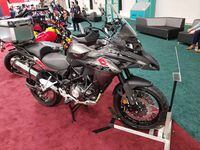

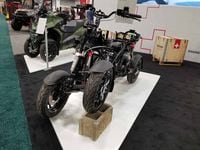
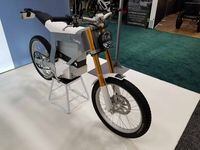
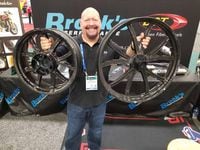
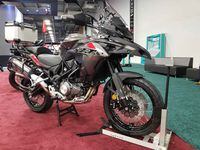
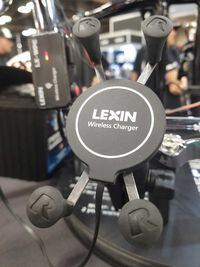
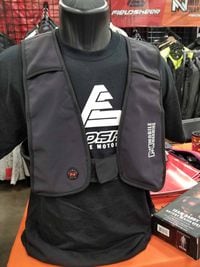


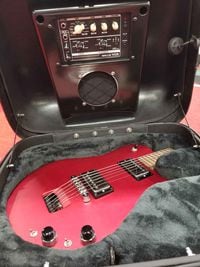

/cloudfront-us-east-1.images.arcpublishing.com/octane/MUQLOVLL2ZDGFH25ILABNBXKTI.jpg)
/cloudfront-us-east-1.images.arcpublishing.com/octane/TNOU5DNE2BC57MFPMGN2EIDXAM.jpg)
/cloudfront-us-east-1.images.arcpublishing.com/octane/GTCXACQGJ5HAPDTGWUQKDEH44E.jpg)
/cloudfront-us-east-1.images.arcpublishing.com/octane/S35YGSEMEZB4BLTDJTSZPF4GLA.jpg)
/cloudfront-us-east-1.images.arcpublishing.com/octane/5UOT6HPX2JFMRJAX6EH45AR4MQ.jpg)
/cloudfront-us-east-1.images.arcpublishing.com/octane/OKWOJWAKP5EP3OACCRRWPCIX2Q.jpg)
/cloudfront-us-east-1.images.arcpublishing.com/octane/2WF3SCE3NFBQXLDNJM7KMXA45E.jpg)
/cloudfront-us-east-1.images.arcpublishing.com/octane/G4MG6OUCJNBSHIS2MVVOTPX65E.jpg)
/cloudfront-us-east-1.images.arcpublishing.com/octane/IIGGWFOTOJGB7DB6DGBXCCMTDY.jpg)
/cloudfront-us-east-1.images.arcpublishing.com/octane/QSTCM6AVEZA5JJBUXNIQ3DSOF4.jpg)
/cloudfront-us-east-1.images.arcpublishing.com/octane/U4I7G625B5DMLF2DVIJDFZVV6M.jpg)
/cloudfront-us-east-1.images.arcpublishing.com/octane/B6XD6LS6IVCQPIU6HXDJSM3FHY.jpg)
/cloudfront-us-east-1.images.arcpublishing.com/octane/ICL63FEDDRDTTMINYICCEYGMDA.jpg)
/cloudfront-us-east-1.images.arcpublishing.com/octane/FCGZHQXRBZFLBAPC5SDIQLVF4I.jpg)
/cloudfront-us-east-1.images.arcpublishing.com/octane/WNOB6LDOIFFHJKPSVIWDYUGOPM.jpg)

/cloudfront-us-east-1.images.arcpublishing.com/octane/X33NU3E525ECRHXLNUJN2FTRKI.jpg)
/cloudfront-us-east-1.images.arcpublishing.com/octane/6KKT5NNL2JAVBOXMZYS5ZO76YA.jpg)
/cloudfront-us-east-1.images.arcpublishing.com/octane/J5RKG5O455GMPGQRF2OG6LRT7A.jpg)
/cloudfront-us-east-1.images.arcpublishing.com/octane/GX2CIZKQVRH2TATDM26KFG2DAE.jpg)
/cloudfront-us-east-1.images.arcpublishing.com/octane/ZWIDYSAKQZHD5BHREMQILXJCGM.jpg)
/cloudfront-us-east-1.images.arcpublishing.com/octane/CYUHJZCTSJCH3MRAQEIKXK7SCQ.jpg)
/cloudfront-us-east-1.images.arcpublishing.com/octane/LKOFINY56FCXJCANJ5M7ZDQUBY.jpg)
/cloudfront-us-east-1.images.arcpublishing.com/octane/4NBPDACMWJH63JQYJVK3QRBDZI.jpg)